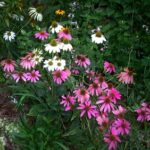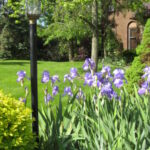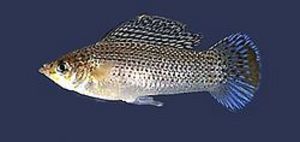When I was a young girl, one of my favorite perennials was irises. I couldn’t wait for them to bloom because then I knew that warm weather was close. We had the bearded iris. Most of them bloomed in purple, but we did have a few yellow ones mixed in.
For centuries, almost every home landscape had a bed of iris growing. This is one perennial that can still be found growing at old abandoned farms. They were usually the bearded iris.
This article will help you determine whether you have the bearded or beardless iris growing in your yard.
Bearded Iris
The height of the bearded iris depends on the variety. They can be a miniature variety that grows to 8 inches or less, or they can grow as tall as 38 inches. The shorter the iris, the earlier it will bloom in the spring.
Bearded irises are cool. When the flower opens, there are 6 petals. The upright petals of the iris are called, standard. The lower petals that lay open is called, fall. Every other petal stands straight up in the middle. The other three petals hang down.
Look at the petals. On the bearded iris, the petals that hang down will have a fuzzy strip goingstraight down the middle of the petal. It is like a fuzzy caterpillar. This is my favorite part of the flower because it feels soft like velvet. It is because of this fuzzy section that the iris got the bearded name.
Bearded iris are long-lived perennials that can grow in almost any kind of soil, and withstand drought conditions. Iris grows well in sun or shady locations. Although they may not bloom as well in the shade. Once established, they will continue to come back every year. We have some that were growing on the property when my grandparents bought the place in the late 1940s.
Bearded iris blooms come in a variety of colors and some are bi-colored.
The leaves are sword-shaped. Even after the flowers fade, the leaves remain green. Do not cut them, because they are storing up food for the plant to make it through the winter months so they can come back again in the spring.
Beardless Iris
The beardless iris flower resembles the bearded iris, but it does not have the fuzzy section going down the center of the petals. They are also need more care than the bearded iris.
Beardless irises are native plants of Asia. The height of the plants depends on the variety grown. The shorter ones are 12 inches tall, but other varieties can grow to a height of 3 feet. The top four types of beardless iris are Spuria, Siberian, Japanese, and Louisiana irises.
Another difference between these two iris is the beardless irises bloom after the bearded iris. The leaves are narrower than those of the bearded iris.
Beardless iris prefers to grow in moist soils. If you want them to bloom at their best, plant them in a sunny location. Dig and divide Japanese irises every three years if you want them to grow. All other varieties can grow in the same bed for several more years before dividing if they receive a regular shot of fertilizer.
Sources:
North Carolina State University: Bearded Iris for the Home Landscape
St. Louis Iris Society: How to Plant and Grow Beardless Iris
“National Garden Book:; Sunset Books; 1997
“American Horticultural Society A to Z Encyclopedia of Garden Plants”; Christopher Brickell; 2004







